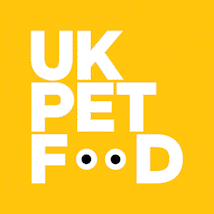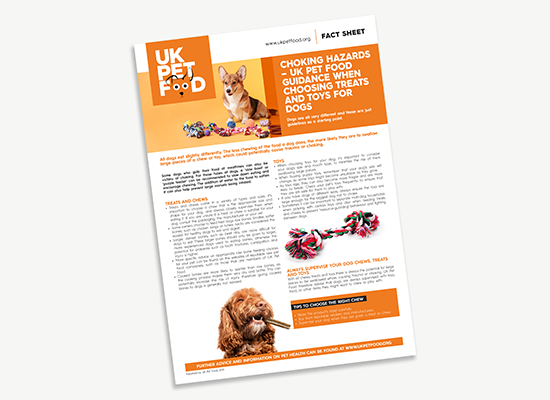What dogs can and cannot eat
We all love treating our furry companions from time to time, but not all foods are safe for our canine friends.
Meat, cereal & vegetables are the best foods for dogs
Even though dogs' teeth are adapted to tear and shear, they also have flatter teeth that can crush plant material. Your dog’s intestines are relatively long (about six times the length of their bodies!) to allow fermentation of more fibrous plants. Meats, cereals and vegetables can all be utilised relatively quickly by your dog’s digestive system.
Dangerous food for dogs
Although some human foods are safe for dogs, many are not. Foods like chocolate, grapes, raisins, garlic and onions are toxic for dogs, so as a rule, it's safer to avoid feeding human food to your dog.
Certain ingredients in foods cause serious health issues for dogs, even in small amounts, so being well-informed about these hazards can help ensure your dog maintains a healthy and happy life. We've put together this list of dangerous foods for dogs to provide you with all the ingredients and foods they are commonly found in, why they are harmful, the symptoms your dog might exhibit and how to treat them if they accidentally ingest any of these dangerous foods.
Xylitol (sweetener)
The sweetener Xylitol is found in many sugar-free products. It's known to be toxic to dogs and possibly other animals as well. It can cause blood sugar levels to drop dangerously low, resulting in vomiting, seizures or even a coma. This toxicity can also be deadly and cause liver failure.
Anti-freeze
Anti-freeze contains a substance known as ethylene glycol which is very poisonous to pets, even in very small amounts. Poisoning from ethylene glycol affects the liver, kidneys and brain. It can cause long-term damage and be fatal.
Onion & garlic
Onion can be used to enhance taste and increase the palatability of food, so some pet food manufacturers use a very small amount in a powdered form. Any pet food manufacturer will ensure that the amount of onion in the product is carefully controlled, which is why it's so important to follow their recommended guidelines on feeding. These guidelines allow for a large safety margin and, therefore, no risk to the pet's health.
Chocolate
You should never feed your dog human chocolate.
Poisoning from chocolate can be fatal in dogs. Chocolate intended for human consumption contains methylxanthines, which act as stimulants in dogs. A good rule of thumb is that the darker the chocolate, the more methylxanthines it contains.
Grapes & raisins
Grape and raisin toxicity in dogs can cause the sudden development of kidney failure (acute renal failure).
Grapeseed extract & grape pomace
Grapeseed extract and grape pomace are very widely used in pet foods as they have excellent antioxidant properties. Antioxidants in the diet are useful because they help combat harmful free radicals, support the immune system and may help to delay ageing.
Grape pomace is the dried and extracted grape skin and seed rather than the whole grape. There's no risk in feeding it to dogs. Dogs can suffer from fatal renal failure after eating grapes or even raisins, but the seed and skin are considered safe. Studies indicate that the toxic element is in the flesh of the grape, which is not included in grape pomace.
Other alternatives commonly used in pet foods are rosemary extracts, mixed tocopherols, Quercetin and green tea. Antioxidants on a pet food label may be listed by name or may come under the category term ‘EC Permitted Antioxidants’. If pet owners want to find out what specific antioxidants are included in the recipe, they can contact the pet food manufacturer who is on hand to provide recipe information.
Bones
Bones can be very dangerous if fed to any pet – they damage teeth, and splintered parts can tear anywhere from the mouth through to the digestive system, where they can also cause obstructions.
When feeding your dog homemade snacks and treats, always ensure meat and fish have had every last bone removed regardless of the size and whether raw or cooked. Never give your dog large animals bones. As an alternative buy mock bones that have been specially developed for feeding to pets and therefore are safe.
Damage from bone chewing and ingestion can be extremely painful and will often need veterinary treatment.
Can dogs have milk?
As with cats, most dogs tend to be lactose intolerant. A puppy has the enzyme lactase, which breaks down the sugar in milk called lactose.
Once the dog is weaned, he generally stops producing lactase and loses the ability to digest it. Milk products can then cause an upset stomach and diarrhoea. On the other hand, some dogs can tolerate milk and do enjoy small amounts.
Skimmed milk
Milk is a food, and although skimmed milk has fewer protein and calories, this can add up, particularly for a small dog. If you want to soften a dry pet food, an alternative is warm water or speak to the manufacturer’s customer care team, who will give you some tips.
Can I give my dog treats?
Treats can be extremely useful for training and rewarding your pet. They should be given in moderation and accounted for in your dog's daily intake. Generally speaking, treats should comprise no more than 10% of your dog’s diet.
You should also be mindful of your dog's eating habits when choosing treats as the less chewing of food a dog does, the more likely they are to swallow large pieces of a chew, which could also potentially cause trauma or choking.

